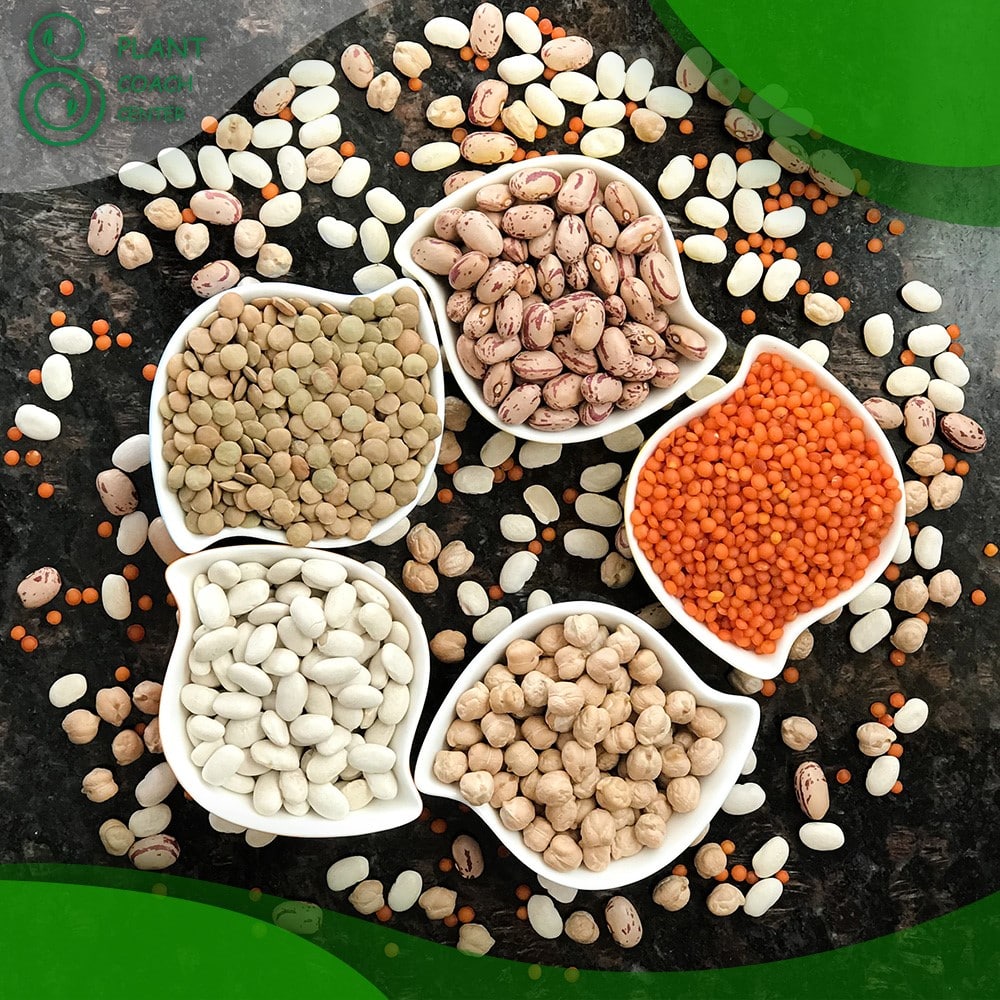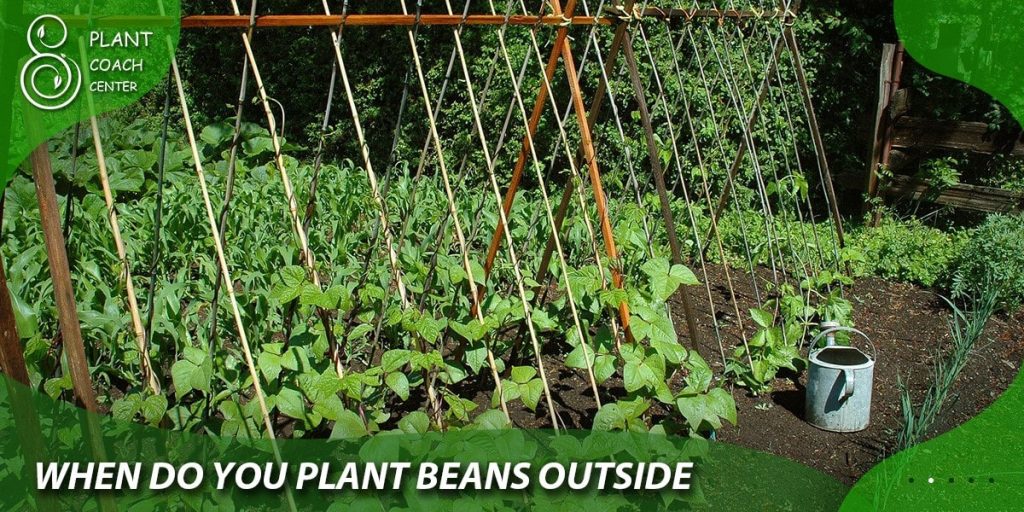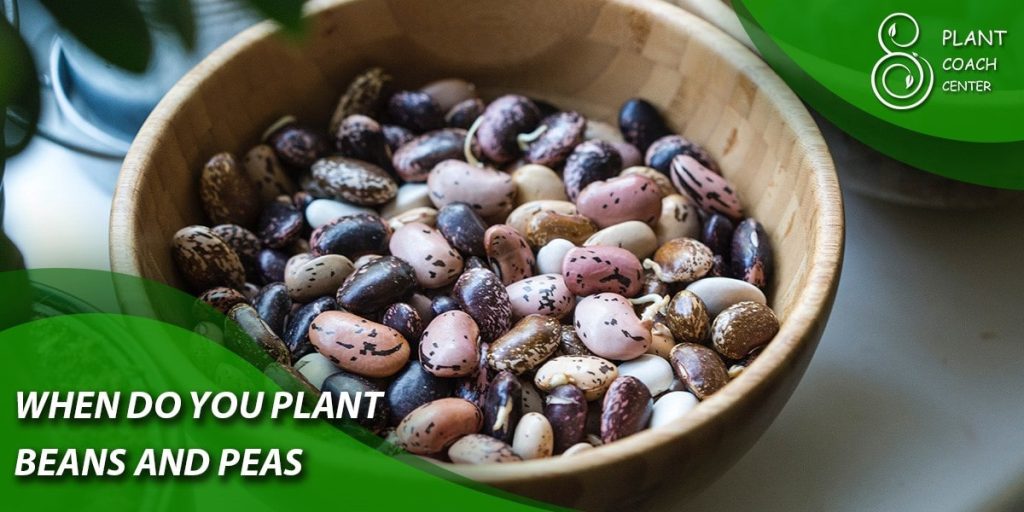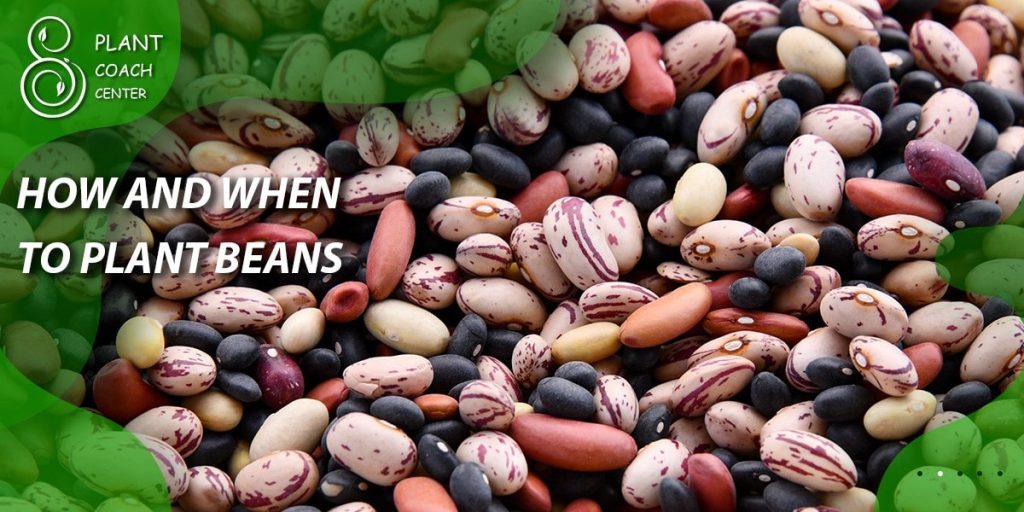When do you plant beans?
Welcome to the world of bean cultivation, where timing is everything! Whether you’re a seasoned gardener or just beginning to explore the joys of growing your own food, understanding the optimal timing for planting beans can significantly impact the success of your harvest. As the humble bean transforms from a tiny seed into a flourishing plant, a delicate dance with nature ensues, guided by seasonal rhythms and climatic nuances.
This captivating article reveals the mysteries behind the perfect bean planting time. From exploring the diverse planting seasons across the globe to deciphering nature’s subtle cues and the influence of climate change, we leave no stone unturned in our quest for gardening wisdom.
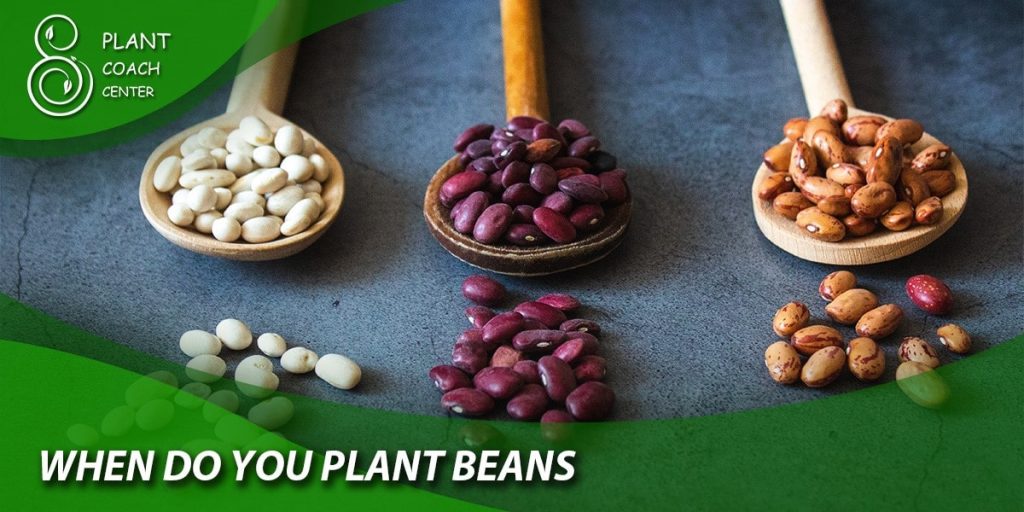
So, whether you’re a backyard enthusiast eager to yield a bountiful crop or an urban dweller nurturing greenery on a balcony, join us as we delve into the fascinating world of beans and unveil the secrets to mastering the art of planting at the right moment. Get ready to sow the seeds of knowledge and watch them sprout into a flourishing bean-filled adventure!
Bean Planting Seasons Around the World
Beans, one of the most beloved and versatile legumes, have been cultivated across diverse regions worldwide for centuries. As a result, their planting seasons vary greatly depending on local climates and environmental conditions. Let’s embark on a globetrotting journey to explore the different bean planting seasons and the unique characteristics that make each region’s approach to bean cultivation a fascinating spectacle.
North America
In North America, the bean planting season typically kicks off in the spring, between April and May, when the soil temperature has warmed sufficiently. The United States and Canada are significant players in bean production, cultivating various varieties, from the beloved green beans to the hearty kidney beans. Northern regions with colder climates may wait until late spring or early summer to plant beans.
South America
South America, considered the birthplace of many bean species, boasts a diverse and rich history of bean cultivation. Countries like Brazil, Argentina, and Colombia have varied planting seasons, primarily dictated by the tropical and subtropical climates. Some areas experience two planting seasons per year, while others have a year-round growing season for specific bean varieties like black beans, a staple in Latin American cuisine.
Europe
In Europe, bean planting typically occurs in late spring, around May, and extends into early summer. Countries like France, Spain, and Italy favor growing traditional heirloom beans, each region boasting its unique bean varieties and culinary traditions. The temperate climates of Europe provide an ideal environment for the thriving growth of beans throughout the summer months.
Africa
Across Africa’s vast and diverse continent, bean planting is influenced by the continent’s extensive array of climates. In regions like East Africa, where the famous “Nyota” (star) beans are grown, planting may begin as early as March or April. In contrast, countries in North Africa might start planting beans later in the year, around May or June, due to hotter and drier conditions.
Asia
In Asia, bean planting is widespread, with countries like China, India, and Indonesia being major bean producers. The planting seasons vary depending on the specific region’s climate. For instance, some areas in India may start planting beans in October, while others wait until February. The monsoon seasons often influence planting schedules in Southeast Asian countries.
Australia
Australia’s diverse climate zones lead to a range of bean planting seasons. In the southern regions with a Mediterranean climate, planting typically begins in spring, while in the northern tropical regions, beans may be planted earlier in the year. In some areas, the warm climate allows for two planting seasons per year.
Signs of Nature: Decoding the Perfect Bean Planting Time
In gardening, seasoned growers and traditional farmers have long relied on nature’s subtle cues and signs to determine the perfect time for planting beans. While modern technology and weather forecasts have their place, there’s an undeniable charm and wisdom in observing the natural rhythms that guide agricultural practices. Let’s delve into the fascinating world of decoding nature’s signs and uncover the secrets to identifying the opportune moment for sowing those precious bean seeds.
Soil Temperature
One of the critical factors influencing bean planting time is soil temperature. Beans thrive in warm soil, typically at a temperature of at least 60°F (15°C). Planting too early, when the ground is still cold and damp, can lead to poor germination and seed rot. As spring approaches, wait until the Earth has warmed up before sowing your beans. Using a soil thermometer can be a helpful tool to ensure optimal conditions for germination.
Frost-Free Dates
For gardeners in regions with colder climates, the last frost date is a critical marker for bean planting. Beans are sensitive to frost and will not survive if exposed to freezing temperatures. Consulting local gardening resources or agricultural extensions can provide valuable information on the average last frost date in your area. To ensure the safety of your young bean plants, plan your planting accordingly, either after the later frost date or after providing appropriate frost protection.
Moon Phases and Planting by the Lunar Calendar
Ancient agricultural practices, often rooted in folklore and traditions, have assigned certain moon phases with favorable planting times. While scientific evidence may not fully support the lunar calendar’s influence on plant growth, some gardeners still swear by this method.
Planting beans during a waxing moon (from new moon to full moon) is believed to enhance above-ground growth while planting during a waning moon (from full moon to new moon) is thought to encourage root development.
Wildlife and Insect Activity
Nature’s intricate web often communicates its readiness for planting through the behavior of wildlife and insects. Observing when certain animal species emerge, or insects become more active can indicate that the environment is conducive to planting. For example, the appearance of migratory birds or the emergence of specific insects might signal that temperatures have reached an optimal level for planting beans.
Wildflower Bloom and Plant Growth in Nature
Take inspiration from the wild landscape around you. Notice when native plants begin to bloom or when the first leaves of trees appear. These events often align with favorable planting times for beans and other crops. Local ecosystems have adapted to the climate and environmental conditions, making them reliable indicators of the right time to sow seeds.
Farmer’s Almanacs and Local Wisdom
Consulting farmers’ almanacs and tapping into the knowledge of experienced local gardeners and farmers can provide valuable insights into historical planting practices and regional wisdom. Such resources often contain time-tested planting schedules based on observations of nature’s signs over generations, making them a valuable tool for modern-day gardeners seeking to enhance their success.
Microclimates and Maximizing Bean Planting Success
In the gardening world, understanding microclimates can be the secret weapon to achieving gardening success, especially when cultivating beans. A microclimate is a localized area with unique climate conditions that differ from the surrounding regions.
These microcosms can create pockets of warmth, coolness, or protection, offering an opportunity to extend the growing season and maximize the yield of your beloved bean plants. Let’s explore how identifying and leveraging microclimates can lead to bountiful bean harvests and elevate your gardening prowess.
Discovering Microclimates
Microclimates can be found in your garden or urban spaces like balconies and rooftops. Pay attention to variations in sunlight exposure, wind patterns, and temperature to identify these areas.
South-facing walls, for instance, tend to receive more sunlight and retain heat, making them ideal microclimates for early planting. On the other hand, north-facing areas may stay more relaxed and provide relief during scorching summer months, making them valuable for extending the growing season.
Extending the Growing Season
With the help of microclimates, you can extend the growing season and plant beans earlier or later than usual. Protective elements like cold frames, row covers, or mulch can enhance microclimates and safeguard young bean plants from late spring frosts or early autumn chills. Capitalizing on these variations gives you a competitive advantage in producing an abundant bean harvest.
Vertical Gardening and Microclimates
Vertical gardening, significantly when growing beans on trellises or arbors, creates microclimates by providing shade to the plants below. This shading effect can keep the soil cooler, reduce water evaporation, and protect delicate seedlings from intense sunlight. The microclimate under a dense bean canopy also becomes a haven for beneficial insects, fostering a healthy ecosystem.
Urban Microclimates and Container Gardening
Urban environments often have distinct microclimates due to concrete and building materials absorbing and radiating heat. Urban gardeners can capitalize on these microclimates by using containers strategically. Containers placed against a warm wall can create a toasty microclimate for beans, allowing them to thrive in areas with limited space.
Microclimates and Water Management
Microclimates impact water distribution within the garden. Areas with increased shade or wind protection may require less frequent watering, while sunny and exposed spots might need more attention. Understanding these variations enables you to optimize water usage, conserve resources, and ensure the well-being of your bean plants.
Rotating Microclimates and Crop Diversity
Crop rotation within microclimates can enhance soil health and prevent pest and disease buildup. Planting different crops in the same microclimate across successive seasons can disrupt pest lifecycles and promote a balanced ecosystem. Beans can be interchanged with other vegetables to keep the soil fertile and disease-free.
Choosing the Right Bean Varieties for Early or Late Planting
As the gardening season unfolds, the timing of planting beans can significantly influence the success of your crop. Fortunately, many bean varieties are available, each with unique characteristics and Adaptability to different planting times.
Whether you aim to kickstart your growing season early or extend it into the cooler months with late plantings, selecting the right bean varieties can make all the difference. Let’s explore some top choices for early and late planting, ensuring you have a bountiful bean harvest throughout the growing season.
Early Planting Champions
– Bush Snap Beans (e.g., ‘Provider’): Bush snap beans are quick to mature and ideal for early plantings. Varieties like ‘Provider’ produce abundant, tender pods ready for harvest in about 50-55 days. These beans thrive in warmer soil and can withstand cooler temperatures better than others.
– Pole Beans (e.g., ‘Kentucky Wonder’): Pole beans take a little longer to mature, around 60-65 days, but they are excellent for early planting due to their climbing nature. Plant them near trellises or other support structures to utilize vertical space and maximize sunlight exposure.
Late Planting Stars
– Lima Beans (e.g., ‘Fordhook 242’): Lima beans are heat-sensitive and perform best in cooler temperatures. Plant them after the last frost date for your region to ensure they thrive during the mild days of late spring and early summer. ‘Fordhook 242’ matures in about 75 days and produces delicious, buttery beans.
– Dry Beans (e.g., ‘Black Turtle’): If you’re interested in growing dry beans, like black beans or kidney beans, opt for varieties like ‘Black Turtle.’ These beans require a longer growing season, around 90-100 days, making them suitable for late plantings in areas with extended summers.
Versatile All-Season Beans
– Contender (Bush Bean): The ‘Contender’ bush bean is a versatile option that works well for both early and late plantings. It matures in about 50-55 days and offers excellent disease resistance, ensuring a reliable harvest throughout the season.
– Blue Lake (Pole Bean): Another flexible choice, the ‘Blue Lake’ pole bean, matures in approximately 60-65 days. This classic bean variety produces tender, stringless pods and thrives well into the summer months.
Consider Regional Adaptation
When choosing bean varieties for early or late planting, consider your local climate and your region’s challenges. Some areas may have short growing seasons, while others experience hot, dry summers or frequent rain showers. Opt for proven successful varieties in your region or consult with local gardening experts to identify the best-suited bean varieties for your specific conditions.
Succession Planting for Continuous Harvest
Consider using succession planting for both early and late varieties. By staggering your plantings regularly, you can enjoy a steady supply of fresh beans throughout the growing season. This technique ensures that as one batch of beans is harvested, the next one is already on its way to maturity.
Conclusion
In conclusion, the art of bean planting is a dynamic journey that intertwines with nature’s rhythms, evolving climate patterns, and our ingenuity as gardeners. By delving into the diverse bean planting seasons worldwide, decoding the subtle signs of wildlife, leveraging microclimates, and selecting the right bean varieties for different planting times, we unlock the secrets to a thriving bean harvest.
Embracing the debate between indoor and outdoor planting, we find ourselves equipped with the knowledge to navigate the changing landscape of climate change. As we venture forward, let us remember that our efforts in sustainable water management and Adaptability are vital for preserving the delicate balance between agriculture and our planet’s well-being.
So, whether you start your journey with beans on plantcouchcenter.com indoors or sow them directly under the open sky, embrace the joys of cultivating this humble legume and celebrate the resilience of nature in every flourishing bean plant. With our hands in the soil and hearts attuned to the Earth, we sow the seeds of a greener and more bountiful future. Happy planting!
When is the best time to plant beans outdoors?
Plant beans outdoors after the last frost date for your region. This usually falls in spring when soil temperatures reach around 60°F (15°C).
Can I start bean seeds indoors before transplanting them outside?
Yes, starting bean seeds indoors is possible. It provides an early start and protection from harsh weather. Transplant seedlings outdoors after the last frost date.
What bean varieties are suitable for late planting and cooler climates?
Lima beans and certain dry bean varieties, like 'Black Turtle,' thrive in cooler climates and are ideal for late plantings.


